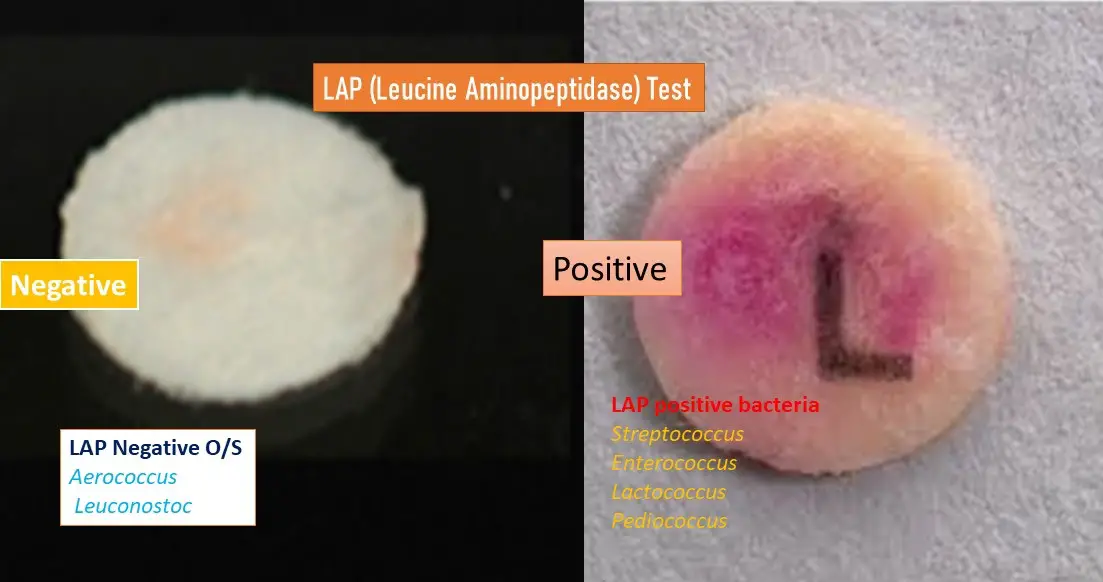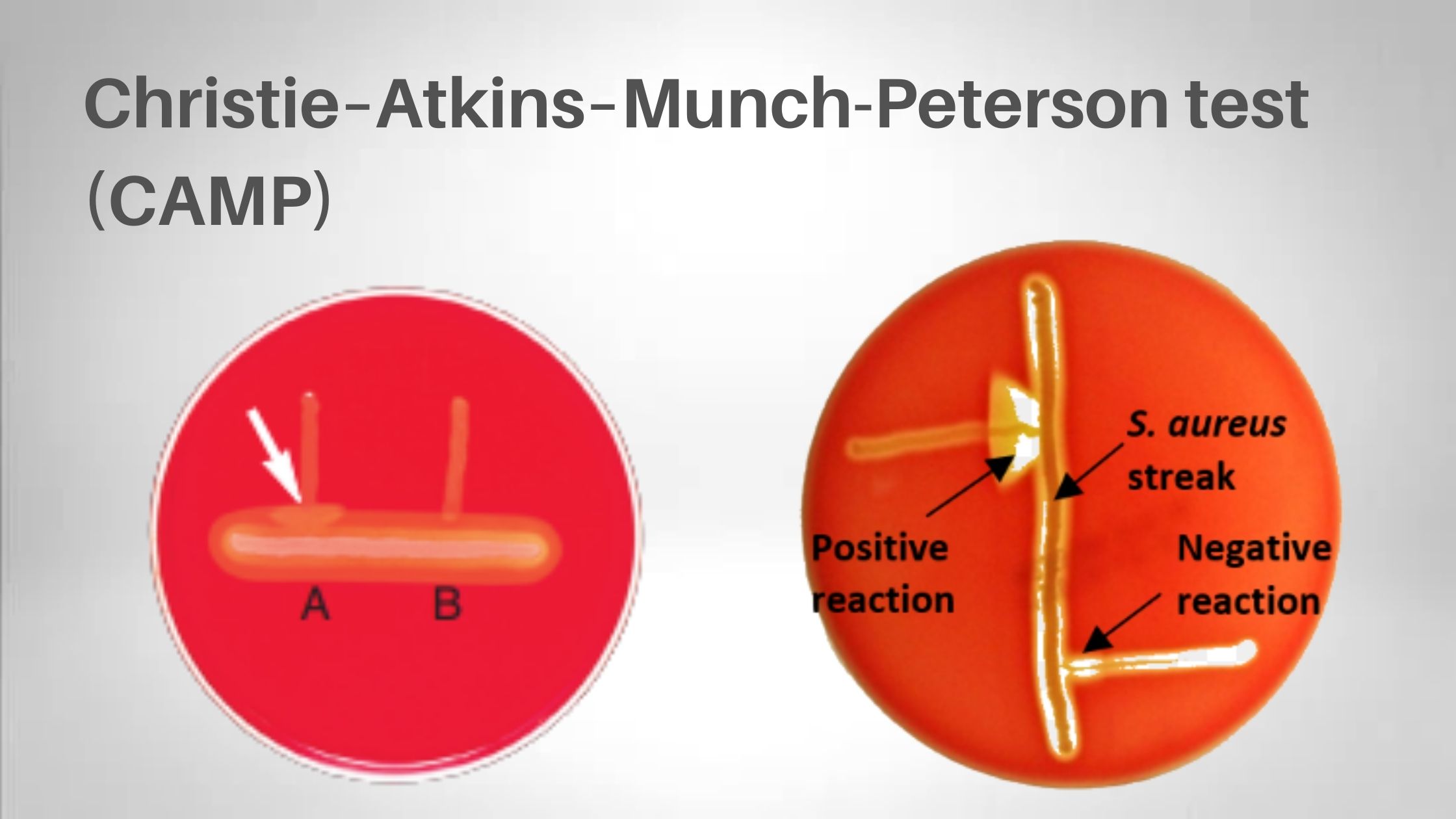Leucine aminopeptidase (LAP) Test – Principle, Procedure, Results
Leucine aminopeptidase (LAP) is an enzyme used to distinguish catalase-negative, gram-positive cocci of Aerococcus and Leuconostoc (LAP test negative) from other organisms in the group, such as Streptococcus, Enterococcus, Lactococcus, and Pediococcus (almost always positive).









